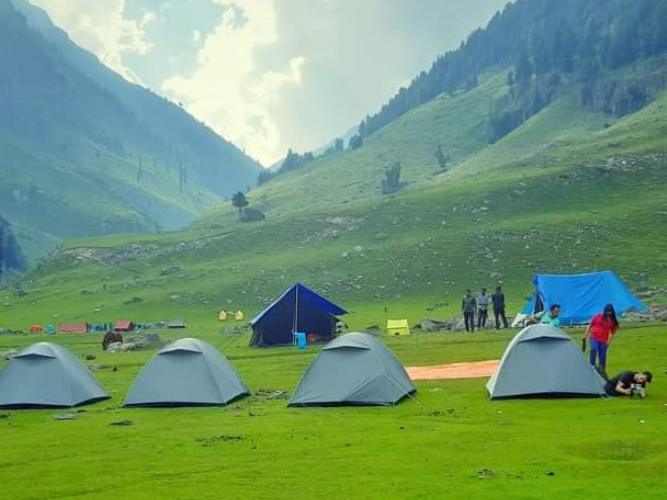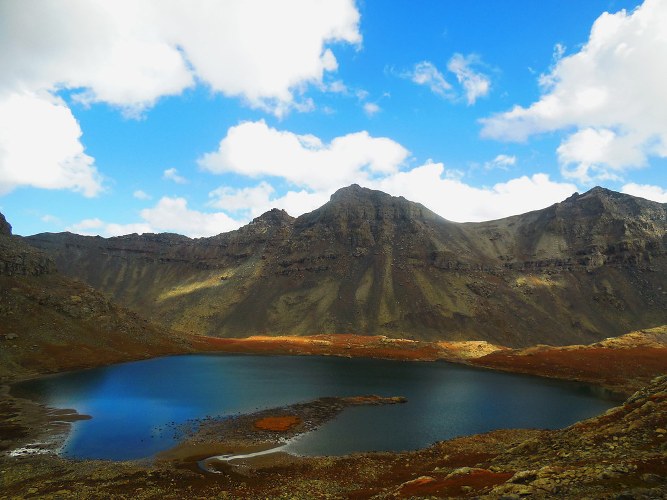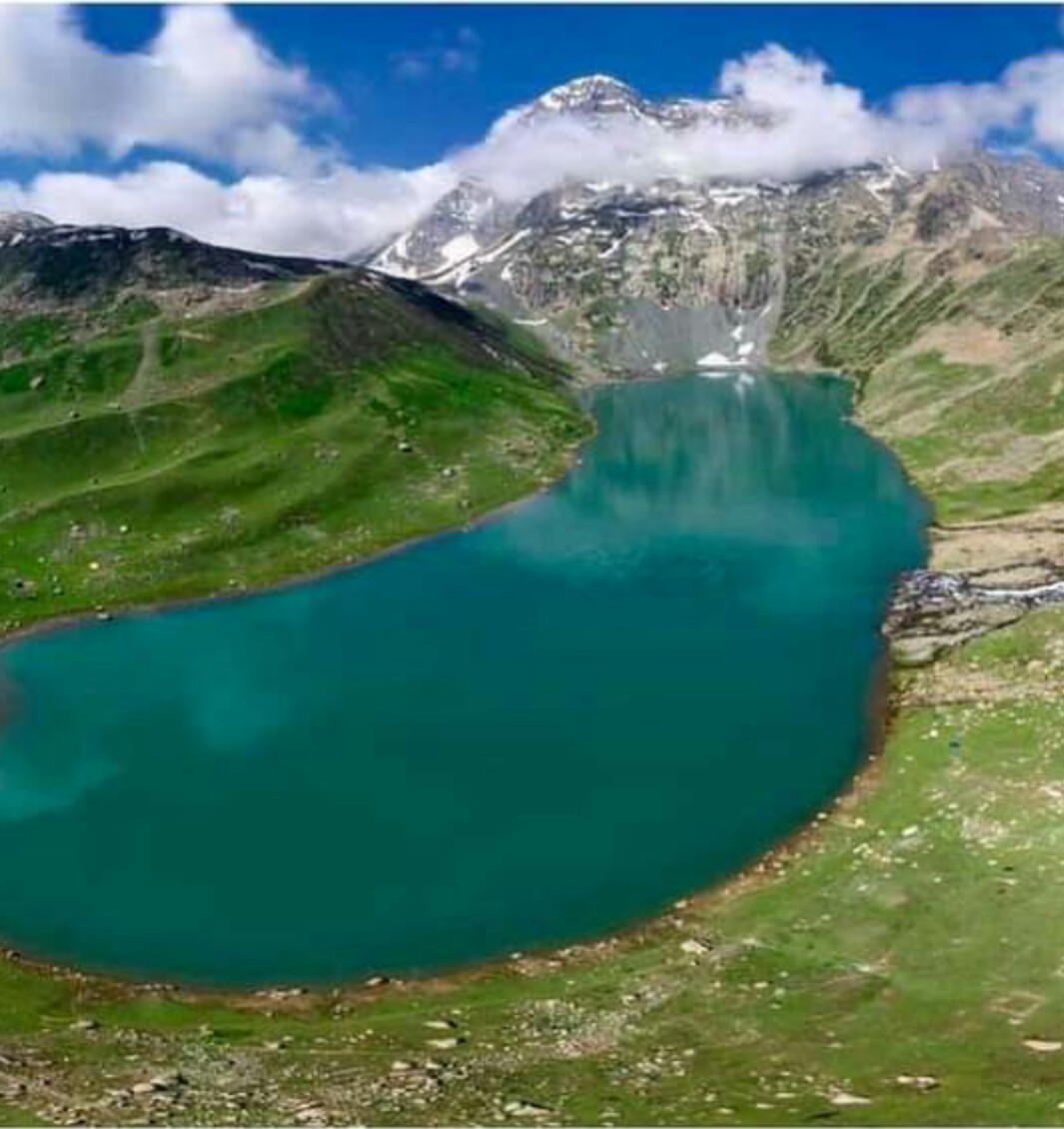Tarsar Marsar Trek Info
Overview
- Region - Jammu and Kashmir
- Duration - 7 Days
- Grade - Easy To Moderate
- Max Altitude - 13500 Ft.
- Approx Trekking Km - 48 Kms.
Tarsar Marsar Trek
Aru, is a tiny village amidst the Himalayan forests and wildlife. Quite a number of treks begin in this region - the most famous ones being the treks to Tarsar and Marsar lakes, Kolahai Glacier, Lidderwat and Katrinag valley. There are many camping sites at the meadows of Aru through which a small stream runs. If you prefer a more comfortable stay before the start of the Tarsar Marsar trek then there are few cottages and guest houses available as well.
Kashmir the “paradise on earth” and universally proclaimed as the home to the most spectacular treks in the Himalayas. Tarsar Marsar Trek takes the cake among all of them. Perched on the cloud-piercing altitude of 13,201 ft, The Tarsar Marsar Trek is composed of majestic trails and three alpine lakes- Tarsar, Marsar, and Sundarsar that complements the beauty of each other.
As you trek through these pristine lakes, you will be amazed by the lush green meadows of Kashmir. Embraced by the thick avenues of splendid Chinar tree forest and the spellbinding Lidder river, which is also known as a glacier river flowing through the Kolahoi Glacier. Throughout the whole day during the stay, you will be stunned by variable shades of snow-fed lake changing with the angle of the sun.
Itinerary
- Altitude: 2,800 m/ 9,150 ft
- Trek Distance: 10 km | Duration: 3 to 4 hrs
- Altitude Gain: 400 m/ 1,200 ft
- Easy terrain, gradual ascent
- Water can be refilled from streams
- Packed lunch on the way
- Stay in tents
Start your day late as the trail to Lidderwat is very easy and can be covered in 3 hours flat. The trail starts witha moderate incline along a broad pathway that is frequented by gypsies and their livestock. As you climb higher you find Red Clover and Dactylus crops grown on both sides of the trail. After 10 minutes climb you can turn back and get the final glimpse of Aru and Pahalgam valley. Continue the trail for 5 min and enter the pine forest where the path becomes a little narrow. You may experience a little difficulty traversing through the slush and wet terrain inside the woods. As you go deeper into the forest sunlight can barely get through but the trail is visible. After 45 min of walking through the woods the trail opens up to a meadow and you can see a lot of gypsy huts to the left and right side of the trail. There is no shortage of water as there are a number of small streams throughout the trail at an interval of about 20 minutes from each other. The trail is quite flat - making it an easy walk for trekkers. After 40 minutes you will find yourself very close to the Lidder River. The trail now runs along the river making the walk even more delightful. Continue on the trail for 10 more minutes till you find a pine grove and gypsy huts beside the river. You will see a small log bridge towards the gypsy huts. Do not cross the bridge.

After refreshing yourself you start towards Lidderwat camp site which is a 15 to 20 min walk along the river. After you traverse the rocks you come across a bridge. Cross the bridge and you get a glimpse of the Lidderwat government guest house (PDA). This is an ideal camping place for the day.
There are two routes from Lidderwat. The one on the right goes towards the Kohalai glacier and the one that goes straight up the hill is towards Shekwass and Tarsar Lake.
Start your day early at around 8 am. The trail goes up an incline for about 45 minutes. After the climb you run into a bit of rocky terrain. The trail then continues at a moderate incline for the next one hour and is the only one that goes towards Shekwass. After about 1 hour you reach an open area full of kanda (spike plants) that resemble sunflowers and look very beautiful. If you happen to brush past these the stings can be quite painful. After you walk through the kanda for about 40 minutes you reach a point where one trail leads to the Lidder river and the other towards the gypsy huts. Take the path on the left that leads towards the Lidder River. There are no stones, huge boulders or bridges to cross the river so you need to walk through the river to cross it. Care needs to be taken as the stones in the river are very slippery and the current is quite high in the middle. Gypsies and horses can be seen crossing at this point as well. Once you cross the river, you continue on the trail with the Lidder River on your right side now. Continue to walk on the trail for about 30 minutes till you come across a large moraine area that's a little tricky to traverse. After this you climb a small ridge for about 10 minutes and then walk down and start climbing again for about 20 minutes. There are quite a few Gypsy huts here.
You walk up straight with the stream on your right for 15 minutes and cross the stream before the ridge ends. You find a small incline which you climb in 10 minutes. Follow the trail on the right with a series of ups and downs for 30 minutes and you arrive at the campsite of Tarsar Lake. The campsite is not big enough to accommodate big groups. A short walk from the campsite gives you a breath taking view of the Tarsar Lake. The lake is quite big and resembles a big pool in between the mountains. You can spend the evening beside the lake before retiring for the day.

You will have to start your day early again at around 8 am. The trail is not long but consists of large moraine areas and it takes time to traverse these rocks. You cross the small stream at the tip where the lake waters flow out. There is a visible trail after you cross the stream that goes all the way to a pass on top. The lake is now on your left and you head towards the Marsar pass. You walk for 20 min and reach a rocky area. Traverse through this and stick to the trail for about an hour to reach very close to the pass. If you turn back now you can get a full glimpse of the Tarsar Lake. Climb for 5 min to reach the top of the Marsar pass. Rest here for a while and enjoy the view of the valley. The descent is quite tough as it is a little steep and covered with rocks all the way to the bottom. Climbing down these huge rocks and boulders can be a little tricky for the trekkers. After a 15 min descent you get a glimpse of Marsar Lake on the right. Once you head down for another 30 minutes you hit a trail that is clearly visible in the valley. Take a right and head towards Marsar Lake. This trail takes about 45 min and being a moraine can take a lot of time unless you travel quickly through the rocks. The Marsar Lake looks quite deserted. There are many local myths and superstitions regarding the lake so you will not find any huts or people here. The trail is also quite challenging through the rocks. There is no ideal place here to pitch tents near the lake so after spending some time here you will have to walk up straight on the moraine or about 40 minutes and start climbing a small ridge towards Sonasar. The weather can deteriorate anytime. Its foggy most of the time so you need to be clear on the direction you are going. There are lots of trails that head left after the lake and taking them might lead you to place called Tral. Just climb the ridge straight up. Sonasar is not far from Marsar. Once you climb up the ridge for about 45 minutes you get the view of Sonasar on your right. The lake is quite small compared to Tarsar and Marsar but you get camping places here. The only problem that you may face is of fog and bad weather.

Start your day early and take the same route that you took from Tarsar. It is quite a distance and you climb up the Marsar pass again, climb down and go towards Shekwass for the night halt. You could also go up till Lidderwat but that would be too far for an average trekker. You could camp at Shekwass village for the day.

You could start by around 8 am and take the same trail towards Aru village passing Lidderwat. 3 hours from Lidderwat and you will be at Aru. You could plan to stay at a cottage at Aru or go up till Pahalgam to stay overnight.
Frequently Asked Questions
The Tarsar Marsar Trek is a mesmerizing expedition that takes adventurers deep into the heart of Kashmir's pristine wilderness. As you embark on this breathtaking journey, you find yourself immersed in a world of unparalleled natural beauty. The trail meanders through verdant meadows adorned with vibrant wildflowers, painting a picture-perfect landscape that seems straight out of a dream. Towering snow-capped peaks stand tall, their majestic presence commanding respect and awe. The crystal-clear waters of the Tarsar and Marsar lakes mirror the surrounding mountains, creating a surreal reflection that evokes a sense of tranquility and wonder. With each step, the trail unveils new vistas, from lush forests to rugged rocky terrains, offering a diverse and ever-changing backdrop that keeps your spirit engaged. As the sun sets, the sky transforms into a kaleidoscope of colors, casting a warm glow on the rugged landscape. Camping under a star-studded canopy, you are lulled to sleep by the gentle melody of nature.
Tarsar Marsar Trek is a 48 km trek.
The best time to do Tarsar Marsar Trek is during monsoon (Jul - Aug) and autumn (Sep - Mid Nov).
Tarsar Marsar Trek is an easy to moderate grade trek.
The maximum altitude reached during the trek is 13,500 ft.
To embark on the Tarsar Marsar Trek, you are required to obtain a few permits and permissions like the Inner Line Permit, and Wildlife Permit. When you trek with us, we obtain all the necessary permits for you.
During the Tarsar Marsar Trek, the accommodation is arranged in guesthouses in base villages and during the trek in camps (twin-sharing).
The cost of Tarsar Marsar Trek is 14,900 INR per person.
Tarsar Marsar Trek is a 7-day long trek.
Here are some of the essentials you should carry for the trek:
1. Trekking shoes: A good pair of trekking shoes is essential for a comfortable trek. Make sure your shoes are well-fitted, sturdy and provide good grip on the trail.
2. Warm Clothing: The weather can be unpredictable in the mountains, so it's important to carry warm clothing, including thermal innerwear, fleece jackets, down jacket, and waterproof jacket.
3. Trekking pants: Carry comfortable and quick-drying trekking pants that are suitable for the weather conditions.
4. Backpack: A good quality backpack with a capacity of 40-50 liters is ideal for carrying your essentials during the trek.
5. Sleeping bag: A good quality sleeping bag is essential for a comfortable stay during the camping nights.
6. Headlamp/Flashlight: Carry a good quality headlamp or flashlight with extra batteries for trekking during early morning or late evening hours.
7. Water bottle: Carry a reusable water bottle and stay hydrated throughout the trek.
8. Snacks: Carry energy bars, dry fruits, and snacks for instant energy during the trek.
9. First aid kit: Carry a basic first aid kit, including band-aids, antiseptic cream, pain relief spray, and medicines for altitude sickness.
10. Sun protection: Carry sunscreen lotion, sunglasses, and a hat to protect yourself from the harsh sun rays.
11. Trekking poles: Trekking poles can help in maintaining balance and reduce the strain on your knees while trekking.
The safety of any trekking expedition, including the Tarsar Marsar Trek, depends on various factors such as weather conditions, individual fitness levels, preparedness, and adherence to safety guidelines. While trekking in remote areas always carries inherent risks, taking necessary precautions can help mitigate potential dangers. Engaging the services of an experienced local trekking corporation can greatly enhance your safety. They possess valuable knowledge of the terrain, weather patterns, and emergency protocols, which can be invaluable during your trek.

